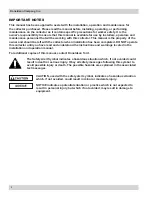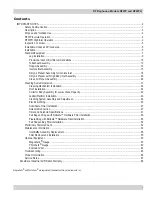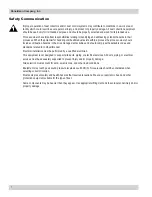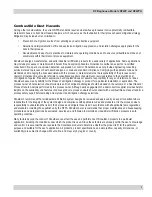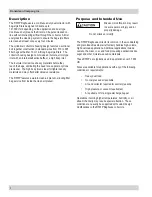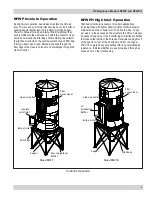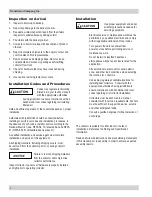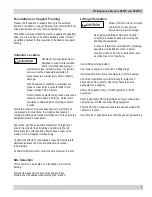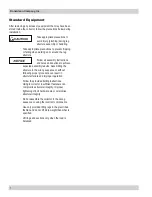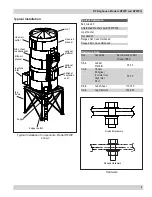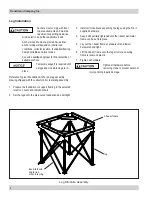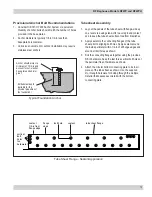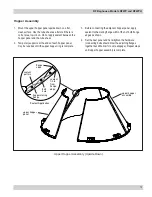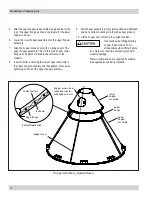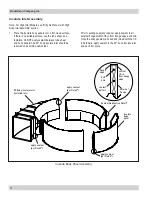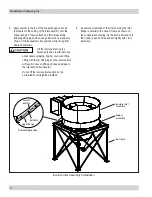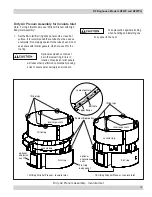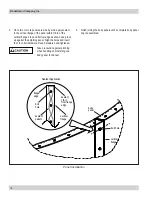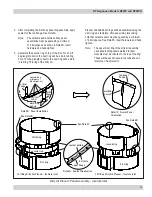
RF Baghouse, Models RFWP and RFWPH
6
Collector Location
Donaldson Torit equipment is not
designed to support site installed
ducts, interconnecting piping, or
electrical services. All ducts, piping, or electrical
services must be adequately supported to
prevent severe personal injury and/or property
damage.
When hazardous conditions or materials are
present, consult with local authorities for the
proper location of the collector.
Dust collection equipment may reach peak sound
pressure levels above 80 dB (A). Noise levels
should be considered when selecting collector
location.
Locate the collector to ensure easy access to electrical and
compressed air connections, to simplify solids collection
container handling and routine maintenance, and to ensure the
straightest inlet and outlet ducts.
Foundations or Support Framing
Prepare the foundation or support framing in the selected
location. Foundation or support framing must comply with local
code requirements and may require engineering.
Foundation and support framing must be capable of supporting
dead, live, wind, seismic and other applicable loads. Consult
a qualified engineer for final selection of foundation or support
framing.
Site Selection
This collector can be located on a foundation or structural
framing.
Provide clearance from heat sources and avoid any
interference with utilities when selecting the location.
Ensure the inlet has at least five diameters of straight duct
prior to the collector inlet including a transition to the full
inlet dimensions. Inlet transition should have a taper with a
maximum of a 90-degree included angle.
Consider the effects of condensation caused by temperature
difference between the process airstream and outdoor
temperatures.
Consider forklift access for solid collection container removal.
Lifting Information
Failure to lift the collector correctly
can result in severe personal
injury and/or property damage.
Use appropriate lifting equipment and adopt
all safety precautions needed for moving and
handling the equipment.
A crane or forklift is recommended for unloading,
assembly, and installation of the collector.
Location must be clear of all obstructions, such
as utility lines or roof overhang.
Use all lifting points provided.
Use clevis connectors, not hooks, on lifting slings.
Use spreader bars to prevent damage to collector’s casing.
Check the Specification Control drawing for weight and
dimensions of the collector and components to ensure
adequate crane capacity.
Allow only qualified crane or forklift operators to lift the
equipment.
Refer to applicable OSHA regulations and local codes when
using cranes, forklifts, and other lifting equipment.
Lift collector and accessories separately and assemble after
collector is in place.
Use drift pins to align holes in section flanges during assembly.


